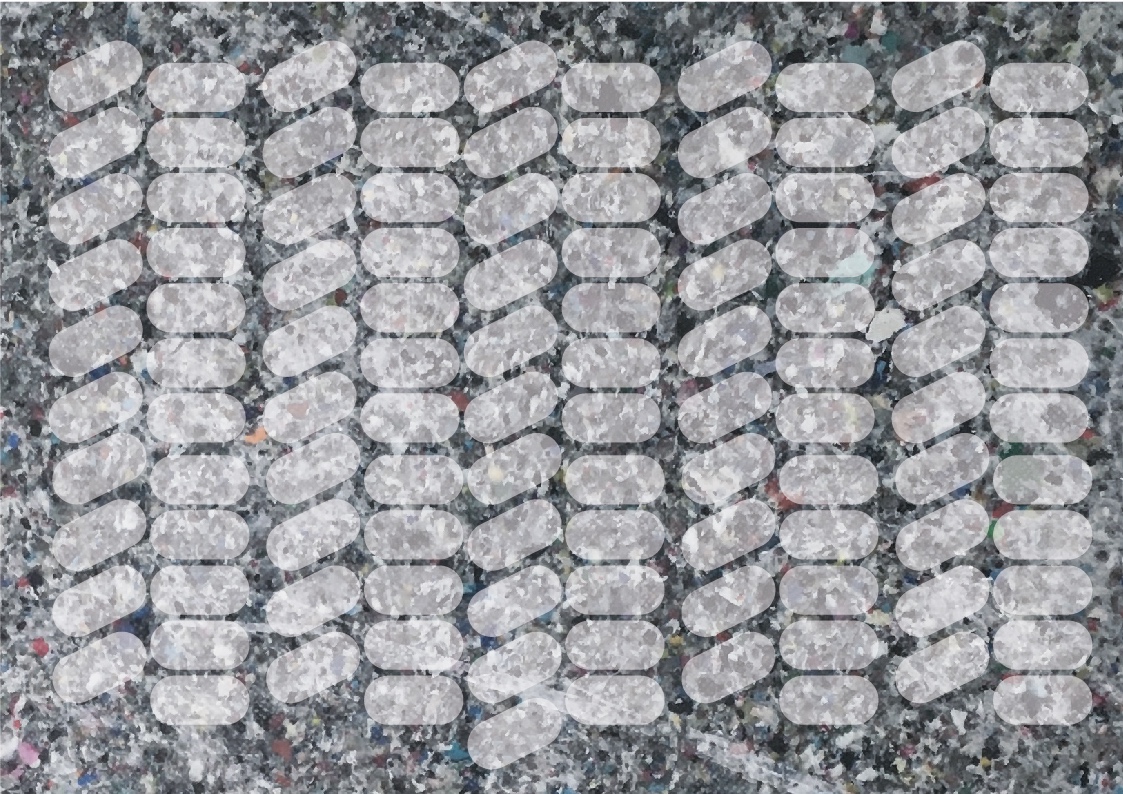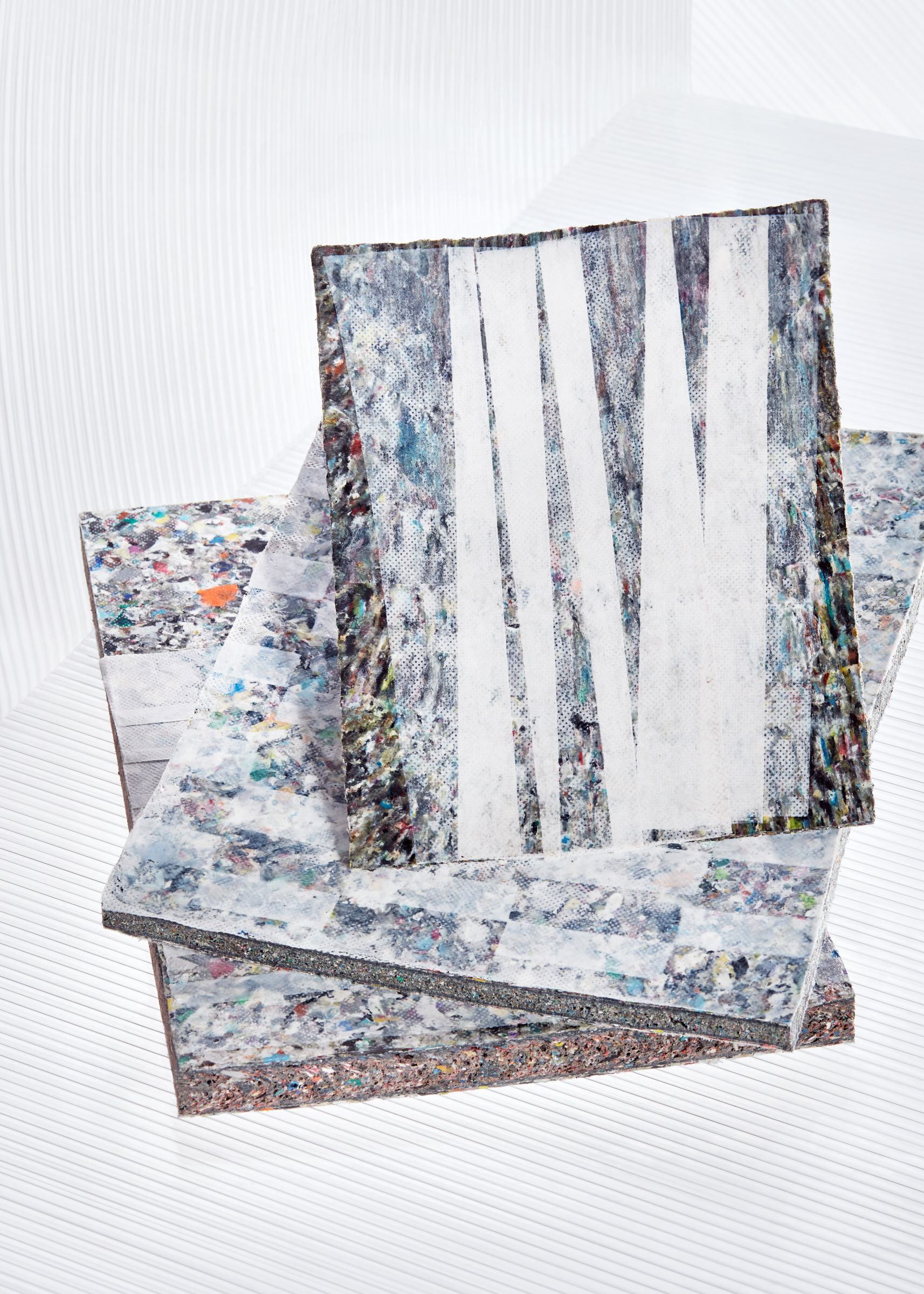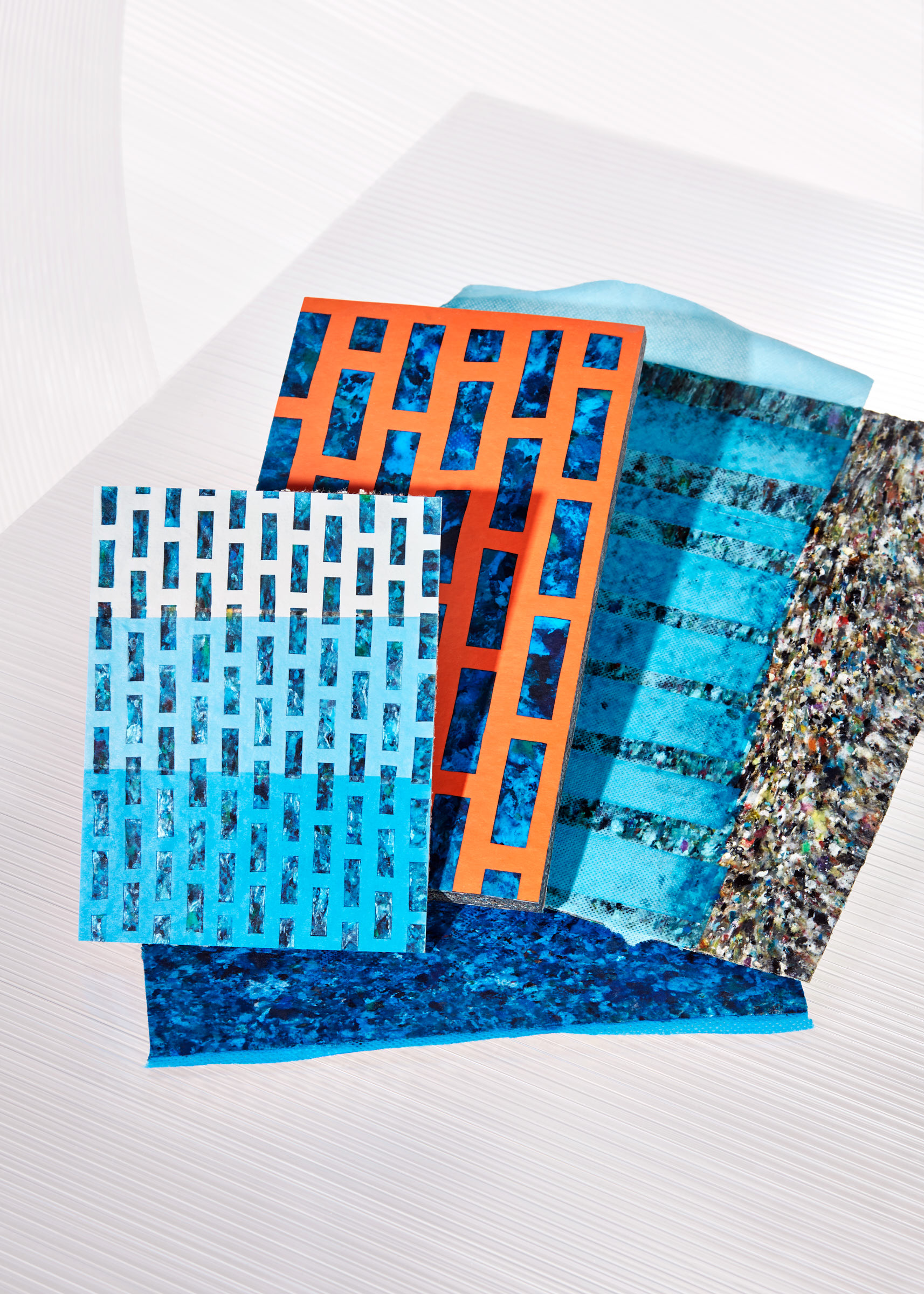
plastic patterns
Prior to transforming the mat into a board by heating, Robin Pleun Maas subjects the exterior non-woven fabric to a number of different folding techniques. The accumulation of the folding operations reveals a variety of subtle patterns and color shades that veil the exterior surface of the boards. This is how Maas applies an efficient method of constructing a decorative panel.
non-woven
Typical for the process in which the ECO-oh! mats are heated, pressed and transformed into panels, is its non-woven top layer that secures the polyester fibres and plastic flakes during the production process and becomes transparent after heating. By manipulating the top layer, the visual identity of the material can be modified.
plastic in process by envisions and in collaboration with Eco-oh!
All images by Ronald Smits






